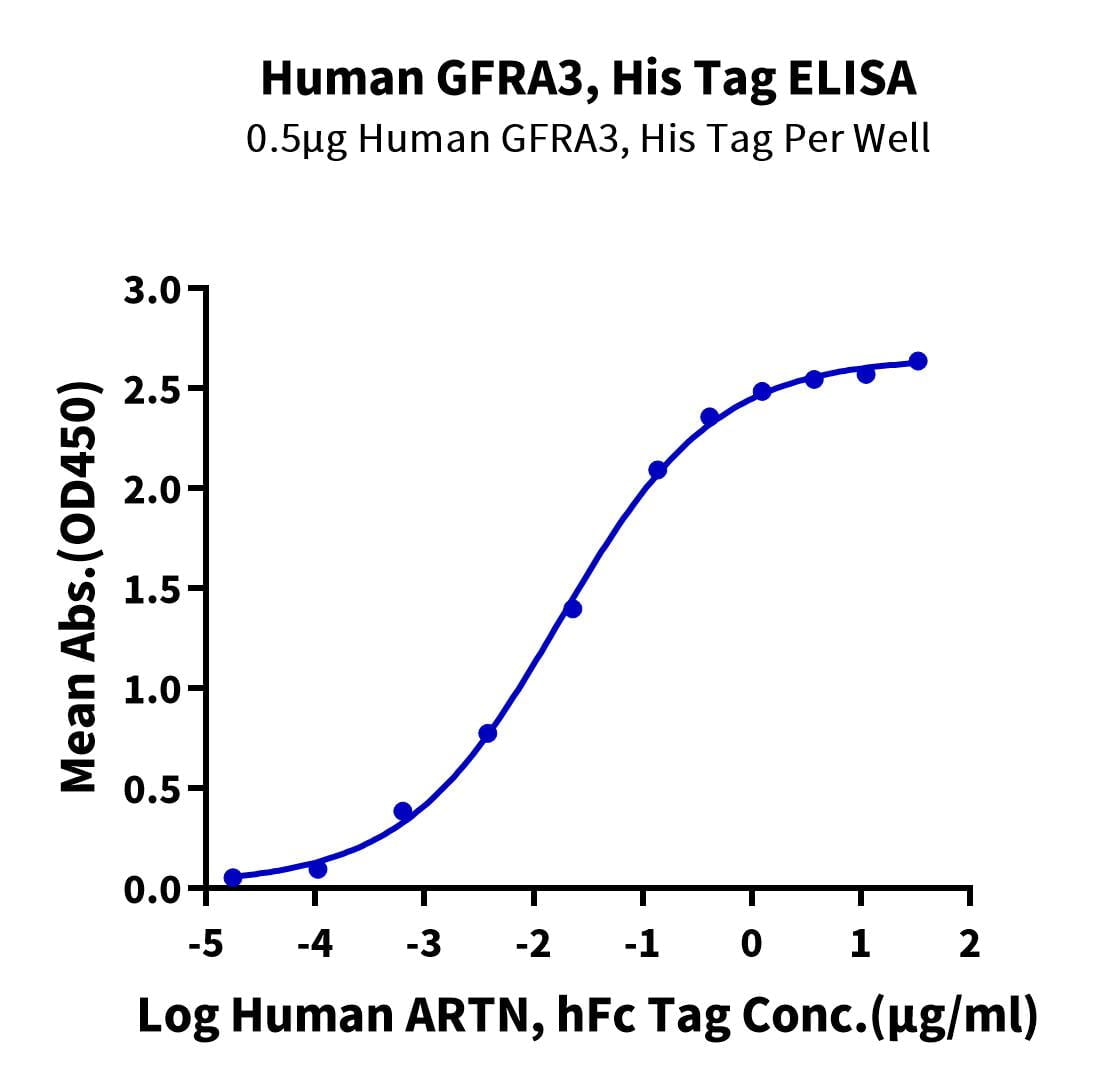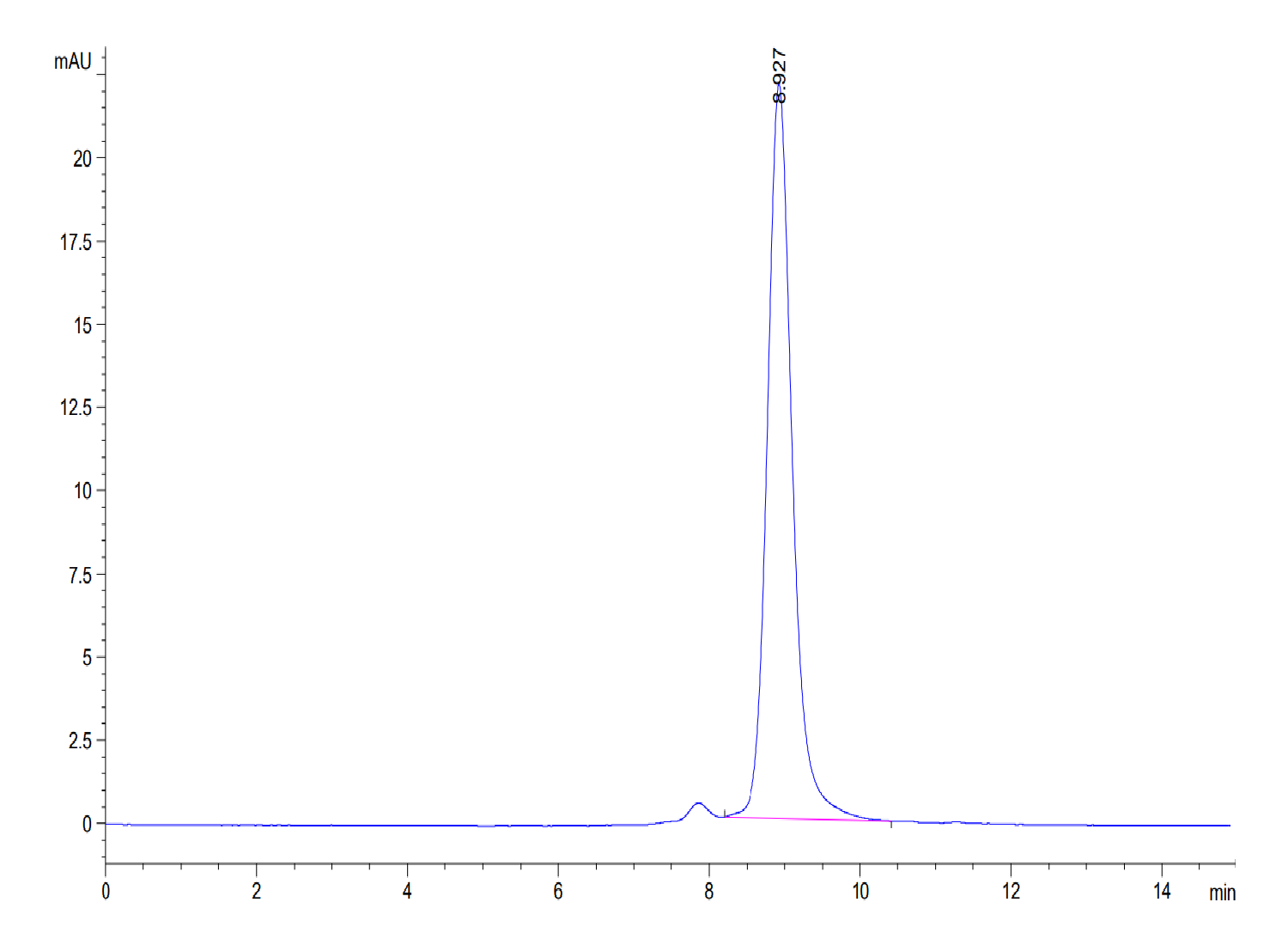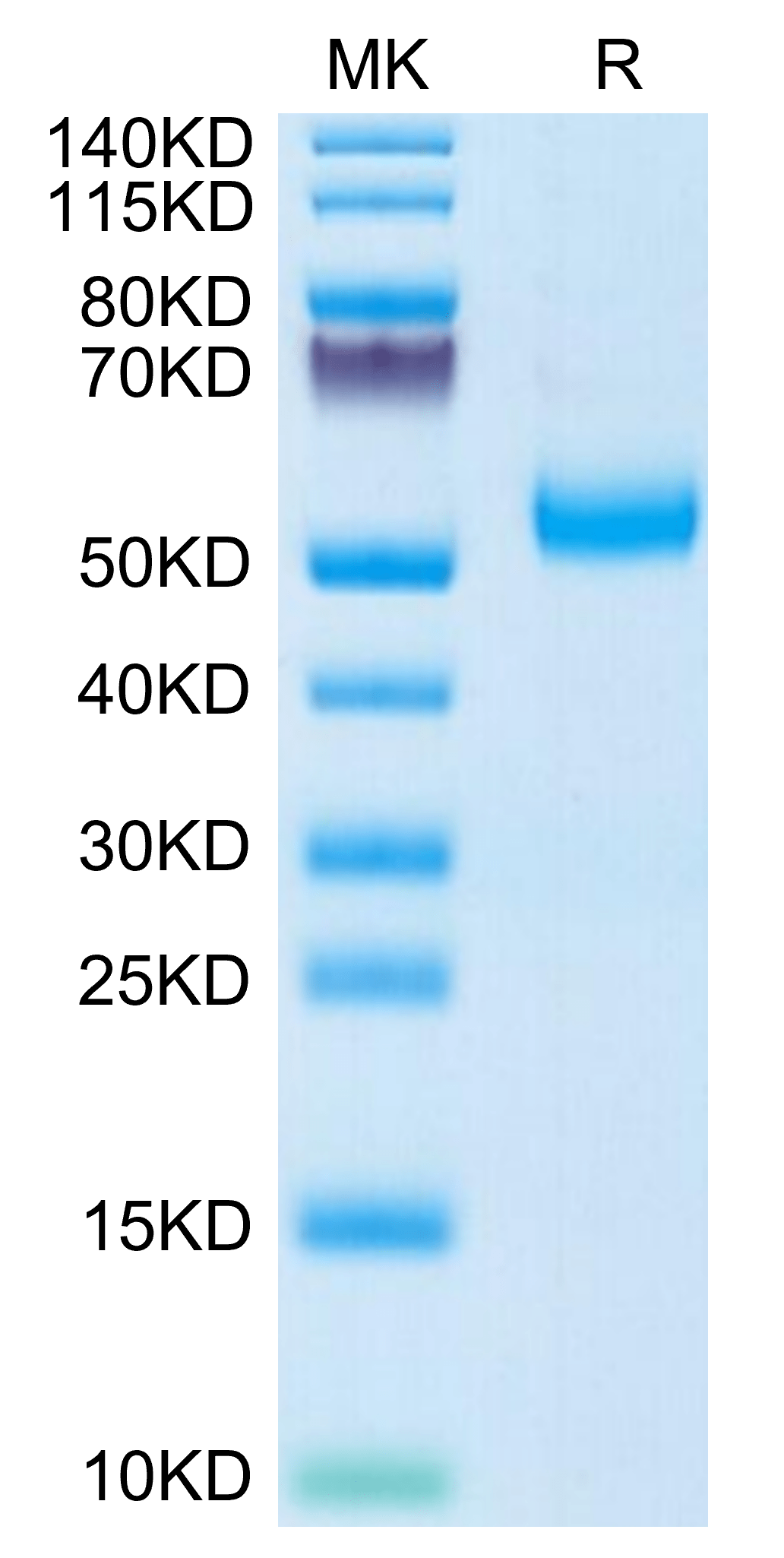| Weight | 1 lbs |
|---|---|
| Dimensions | 9 × 5 × 2 in |
| accession | O60609 |
| express system | HEK293 |
| product tag | C-His |
| purity | > 95% as determined by Tris-Bis PAGE;> 95% as determined by HPLC |
| background | GDNF (glial-cell-line derived neurotrophic factor) is a potent neurotrophic factor for dopaminergic neurons. Neuropsychiatric diseases and their treatments are associated with alterations in the levels of both GDNF and its receptor family (GDNF family receptor alpha or GFRA). GFRA1, GFRA2 and GFRA3 are located in chromosomal regions with suggestive linkage to schizophrenia. |
| molecular weight | The protein has a predicted MW of 40.3 kDa. Due to glycosylation, the protein migrates to 50-55 kDa based on Tris-Bis PAGE result. |
| available size | 100 µg, 500 µg |
| endotoxin | Less than 1EU per μg by the LAL method. |
Human GFRA3 Protein 3633
$270.00 – $900.00
Summary
- Expression: HEK293
- Functional: Yes (ELISA)
- Amino Acid Range: Asp32-Trp382
Human GFRA3 Protein 3633
| protein |
|---|
| Size and concentration 100, 500µg and lyophilized |
| Form Lyophilized |
| Storage Instructions Valid for 12 months from date of receipt when stored at -80°C. Recommend to aliquot the protein into smaller quantities for optimal storage. Please minimize freeze-thaw cycles. |
| Storage buffer Shipped at ambient temperature. |
| Purity > 95% as determined by Tris-Bis PAGE |
| target relevance |
|---|
| GDNF (glial-cell-line derived neurotrophic factor) is a potent neurotrophic factor for dopaminergic neurons. Neuropsychiatric diseases and their treatments are associated with alterations in the levels of both GDNF and its receptor family (GDNF family receptor alpha or GFRA). GFRA1, GFRA2 and GFRA3 are located in chromosomal regions with suggestive linkage to schizophrenia. |
| Protein names GDNF family receptor alpha-3 (GDNF receptor alpha-3) (GDNFR-alpha-3) (GFR-alpha-3) |
| Gene names GFRA3,GFRA3 UNQ339/PRO538/PRO3664 |
| Protein family GDNFR family |
| Mass 9606Da |
| Function Receptor for artemin (ARTN), a growth factor that supports the survival of sensory and sympathetic peripheral neurons (PubMed:31535977, PubMed:9883723). ARTN-binding leads to autophosphorylation and activation of the RET receptor (PubMed:31535977, PubMed:9883723). |
| Catalytic activity #N/A |
| Subellular location Cell membrane ; Lipid-anchor, GPI-anchor . |
| Tissues Widely expressed in adult and fetus which exhibit a similar pattern. Essentially not expressed in the central nervous system, but highly expressed in several sensory and sympathetic ganglia of the peripheral nervous system. Moderate expression in many non-neuronal tissues, particularly those of the digestive and urogenital systems, but high expression in stomach and appendix. Several types of glandular tissues show low expression. Very low or no expression detected in the hematopoietic system. |
| Structure Interacts with ARTN ligand and RET: forms a 2:2:2 ternary complex composed of ARTN ligand, GFRA3 and RET receptor (PubMed:16765900, PubMed:31535977). Interacts with SORL1 (PubMed:23333276). |
| Post-translational modification N-glycosylated. |
| Target Relevance information above includes information from UniProt accession: O60609 |
| The UniProt Consortium |
Data
Publications
Publications
| pmid | title | authors | citation |
|---|---|---|---|
| We haven't added any publications to our database yet. | |||
Protocols
| relevant to this product |
|---|
Documents
| # | ||
|---|---|---|
| Please enter your product and batch number here to retrieve product datasheet, SDS, and QC information. | ||


















